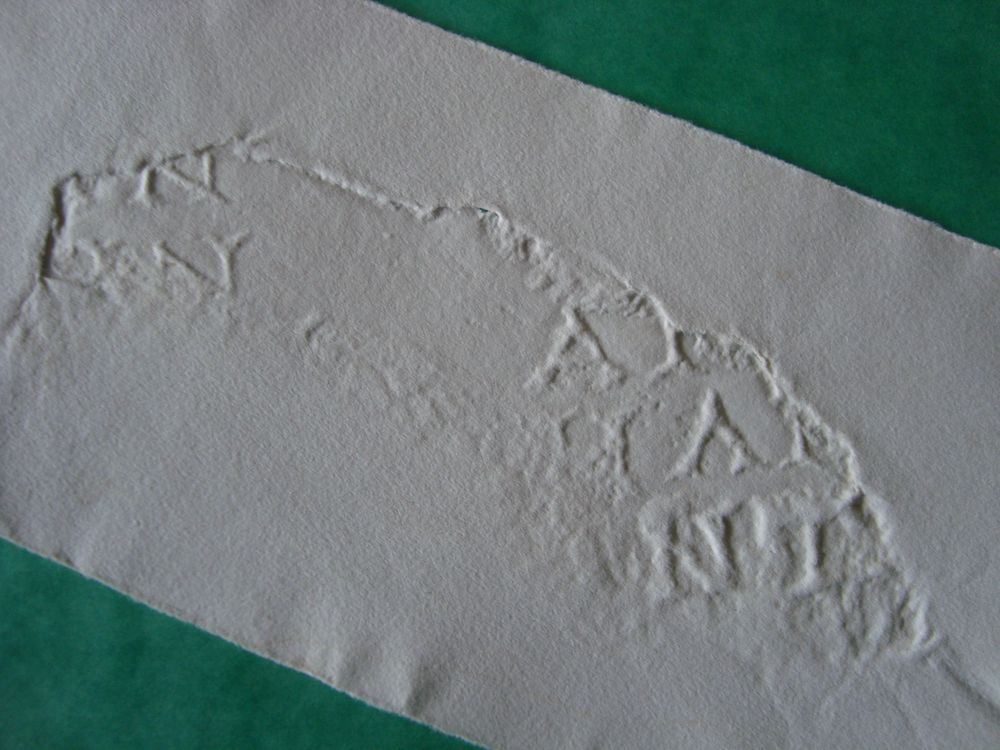EpiDoc XML:
IGCyr1375002
Trismegistos ID:
997637
Source description
Support: Small fragment of a white marble block, broken off on all sides (preserved dimensions w: 0.115 × h: 0.075 × d: 0.02).
Layout: Inscribed on the face with a large space at each line, giving the impression of two columns.
Letters: Letters (0.008) not much pressed together, with small serifs; alpha with straight bar.
Date: Perhaps second or first century BC (lettering).
Findspot: Plausibly found before World War II at Cyrene ➚, exact findspot not registered.
Place of origin: Perhaps findspot.
Last recorded location: Cyrene Museum, 341. Seen in 1979 by Dobias-Lalou in Shahat: Cyrene Museum.
Text constituted from: Transcription from stone (CDL).
Bibliography
Never published before this edition.
Text
French translation
(Liste de noms et patronymes).
English translation
(A list of names and fathers' names).
Italian translation
(Lista di nomi e patronimici).
Commentary
This very poor fragment may be considered part of an ephebic list because it provides, in a kind of columnar display, ends of names at the accusative and beginnings of other names, which should be their fathers' names. This type of documents is known from the second century BC on and difficult to dispatch between the Hellenistic and the Roman period (see Dobias-Lalou 2016, p. 240). Joining this small fragment to a larger document is a tempting task. In spite of some similarities (e.g. the letters height), the comparison between the stones and the squeezes shows that it cannot belong to IGCyr1040002, the stones being different and the width of the vacat unknown. On the other hand, it resembles IRCyr2020 C.431, with an identical space between the name. However, our fragment cannot be placed into its gaps. A very faint argument for a later (thus Roman) date would be the name Heliodoros, which seems here an unescapable restoration and is hitherto not attested in Cyrenaica for the Hellenistic period.
CC BY-NC-SA 4.0 Deed Attribution-NonCommercial-ShareAlike 4.0 International License.
All citation, reuse or distribution of this work must contain a link back to DOI: https://doi.org/10.60760/unibo/igcyrgvcyr2 and the filename (IGCyr000000 or GVCyr000), as well as the year of consultation.

